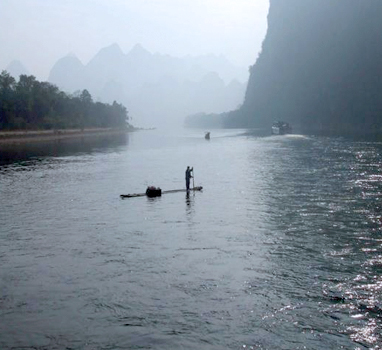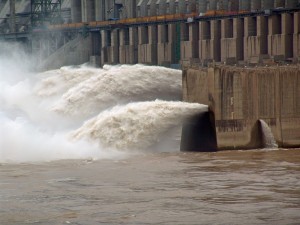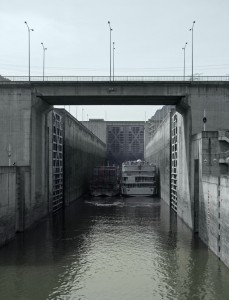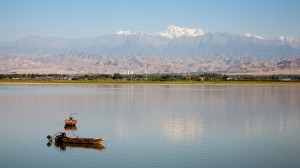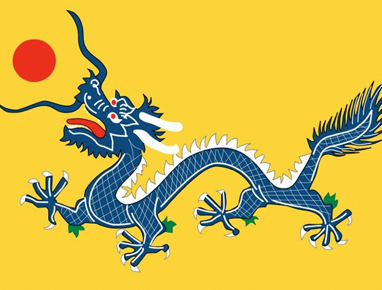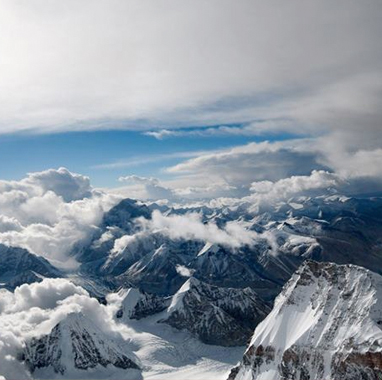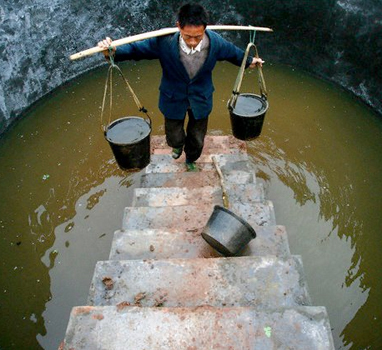Hydro-Power and Hydro-Hegemony: China’s Prolific Dam-Building
The History of Hydro-Power in China
Before 1949, only 22 large dams existed in China. A dam study by Oregon State University concluded that since that time, the People’s Republic of China has undergone four waves of dam construction. Socialist agricultural policy between 1949 and 1960 encouraged the construction of many small and medium-sized irrigation dams. In particular, the 1958-1960 Great Leap Forward policy advocated that each of China’s 1,465 counties build at least one water conservation dam. As a result, tens of thousands of dams were built in China, mainly by peasant-led teams with limited equipment, materials, and training. During the period from 1968 to 1980, the pace of dam construction increased. Water projects grew in size and complexity and were progressively constructed for hydropower and flood control. While fewer dams were built between 1980 and 2000, those that were constructed were larger in scale and more technically difficult. The 1978 market reforms allowed China to import foreign technology, know-how and funding, enabling the building of dams that previously had been too difficult and expensive to undertake.
Government measures since 2003 have led to a decentralization of hydropower production. The State Power Corporation was disbanded, its assets were distributed and development rights on China’s main rivers were shared out. While the central government has a majority of stock in each of the companies into which the State Power Corporation was split, in general, the enterprises act quite independently. The “corporatization” of China’s hydropower sector has created a significant increase in domestic and overseas dam building as companies compete to secure existing assets and to develop new hydro-projects.
Today, China runs about half the world’s approximately 45,000 dams that are larger than 15 m in height. In total, the number of dams in China is estimated to exceed 85,000. In 2009, China’s installed hydropower was calculated to be approximately 200,000 MW, representing about 17% of China’s total electricity power. According to recent reports, of the 37 GW hydro-power capacity added worldwide in 2014, a full 22 GW, nearly 60%, was added in China alone, dwarfing developments in other nations (the five largest contributors behind China added a combined 8.7 GW). This has brought China’s hydropower capacity up to 27% of the world total. China continues to set high goals for itself, with China’s National Energy Agency planning to increase China’s hydropower capacity to approximately 380,000 MW by 2020. Huge hydropower cascades have been proposed and are being constructed on some of China’s remaining pristine river basin systems including the Lancang, (upper Mekong), the Nu (Salween) and upstream of the Three Gorges Dam on the Yangtze. It is estimated that China has relocated a total of almost 23 million citizens since 1949 to make way for its water projects.
The Three Gorges Dam
Large dams are enormous interventions into highly complex ecosystems. Their impact can be felt thousands of kilometers away and often occur many years after construction has been completed. It is impossible to anticipate and mitigate all the social and environmental impacts that such projects can cause. The Three Gorges Dam provides a good indication of the challenges that such large dams pose.
Originally conceived by Chairman Mao and supported by Zhou Enlai, the Three Gorges Dam, and its related infrastructure, is the largest water project in the world. It stretches approximately 2km across the Yangtze River, which flows 6,418 km eastward from the Tibetan glaciers through China’s southwest, central, and eastern regions before eventually emptying in the East China Sea at Shanghai. The Three Gorges Dam reaches nearly 200m in height and has created a reservoir 600km long with a storage capacity approaching 40 billion m³. Three Gorges generates approximately 22,000 MW of electricity, equivalent to the burning of 50 million tons of coal annually, compared with Hoover Dam, for instance, that has an installed capacity of only 2080 MW. It was built at an estimated cost of $27 billion, although if hidden costs are taken into account, some appraise the dam’s actual cost to be in excess of $60 billion. Hidden costs include losses incurred as a result of the reduction in commercial fishery production, the cost of landslides caused by frequent fluctuations in water levels and the further population resettlement that these landslides are likely to require, the costs of water pollution as raw sewage and fertilizer run-off collect in the Three Gorges Reservoir instead of being flushed downstream, the shrinking of the Yangtze river estuary, and the weakening of downstream dikes caused by the dam’s faster than anticipated water discharge. Besides generating emission-free energy, the Three Gorges Dam was built to control flooding, to improve water resource utilization and river navigation. Access to the major port of Chongqing, for instance, which receives 90% of its goods by water, has improved markedly even though it is located more than 600 km upstream of the dam. The Three Gorges’ lock system is one of the world’s largest and has also helped to increase the amount of cargo able to move into the river’s upper reaches.
Despite these real benefits, the Three Gorges Dam has also generated significant problems. Most important of these has been the disruption of the Yangtze’s ecosystem. When the river flowed naturally, it helped to cleanse industrial pollution. It also traditionally transported large sediment loads from the river’s upper reaches to the East China Sea. The Three Gorges Dam has significantly decreased downstream sediment transport, changing the river’s chemical balance, temperature, and flow. This in turn is impacting fish habitats. In addition to changing the river’s ecological characteristics, the dam is also blocking fish migration, impacting access to spawning grounds; it also may have contributed to the extinction of the Yangtze river dolphin. Between 2003 and 2005, annual fish harvests from below the dam were 50% to 70% below previous baselines; larva and eggs levels have dropped off even more sharply. Although pollution and other factors were already causing a reduction in fish stocks before the dam was constructed, the Three Gorges accelerated the trend.
The river’s reduced silt load has also deprived downstream agricultural land and fisheries of nutrients. Additionally, because less silt is reaching the river’s mouth, approximately 980 acres of coastal wetlands are disappearing each year. This has allowed sea water to intrude further upriver, affecting coastal agricultural and drinking water. Silt buildup within the reservoir is also impacting its overall storage capacity, causing higher volumes of water to be released from the dam, stressing downstream levees.
Landslides around the Three Gorges Reservoir have also been a greater problem than was first expected. The fluctuating water levels of reservoir have weakened hundreds of miles of its slopes, triggering massive mudslides. Controlling this erosion is projected to require a further investment of $10 billion or more. In some cases, landslides have produced massive waves as high as 50 meters, causing even more damage to the reservoir’s edges.
Every large dam built in China has led to the resettlement of local people because of China’s high population density along its major rivers. Over 1.2 million people have already been resettled as a result of the Three Gorge’s construction. Originally, residents were to be shifted to higher ground nearby, given new homes and new jobs. Yet, greater than anticipated erosion and landslides made large uphill areas unsuitable for building, so the displaced were eventually resettled to 11 different provinces. In late 2007, it was announced that another 4 million people – a number equivalent to the entire population of Scotland are likely to be relocated from the Three Gorges Reservoir area in the next 10 to 15 years. Officials dispute that these are related to the reservoir’s landslides and ecological degradation, arguing instead that they are part of the national experiment to ease regional overpopulation and to provide greater opportunities for industrial development.
Many scholars are now finding that people displaced due to construction projects face the long-term risk of continued food insecurity, lack of access to good arable land, joblessness, and social marginalization. Displaced women are often more severely affected than men. Taking farmland from the host population to give to the resettled groups has also often caused tensions and conflict between the two groups. Studies indicate that early resettlement efforts at the Three Gorges have indeed led to diminished living standards for many of the displaced. Local government corruption has aggravated resettlement challenges as 12% of the resettlement funds were estimated to be embezzled; hundreds of local officials have now been imprisoned.
In addition to the social costs, many now believe that large dam reservoirs can also cause seismic events as their weight can place unsustainable pressure on local faults. The Three Gorges Dam sits on two major fault lines, and scientists have acknowledged that seismic activity has increased slightly since the reservoir first started impounding water. Earthquakes can also damage a dam’s structure. Many of the new hydro-projects outlined in 12th Five-Year Plan are to be constructed in China’s mountainous southwestern region, which is crossed by numerous active fault lines. The tectonic movement in the three parallel Rivers area of the Nu, Upper Mekong and Upper Yangtze is one of the strongest in the world, for instance, yet China is planning to erect a cascade of dams in these areas. Research in the Chinese Journal of Geology and Seismology has recommended that further study be undertaken to determine the role that dam reservoirs play in triggering quake activity.
Environmental Movement Impacts Hydro-Power in China
The Chinese government has tried to address some of the problems associated with dams by improving the legislation which regulates the industry. While not always enforced, recent legislation has required more stringent procedures for environmental and social impacts assessment. A September 2003 law, for example, obliges companies planning projects with significant environmental impacts to conduct environmental impact assessments, and to have the assessments approved by the appropriate Environmental Bureau or the Ministry of Environmental Protection. Additionally, public participation in environmental impact assessment is increasingly encouraged. 2008 legislation has laid-out basic instructions on methods for public disclosure of environmental impact assessments, when to involve the public in the environmental impact assessment process, and who should be included in public participation. Indeed, in 2004 for instance, criticism from environmentalists, the public and the international media at least temporarily halted the development of a 13-dam cascade planned for the Nu River in Yunnan province, one of China’s last free flowing rivers. Laws passed in 2006 made efforts to better protect those displaced by dam construction by setting out appropriate land compensation, requiring that displaced people be provided with a level of livelihood similar to or greater than that which they had prior to the dam being built, and that resettlement plans must include economic development strategies as opposed to simply providing one-off monetary compensation.
Damming of Trans-boundary Rivers – Hydro-Hegemony
Many of China’s new planned hydro-engineering projects are on trans-boundary rivers, including the Mekong, Salween or Nu, Brahmaputra, and Amur. On the Brahmaputra River, for instance, a series of five dams is planned to be built close to disputed territory between China and India which will impact India and Bangladesh downstream, causing concern that China may divert the Brahmaputra’s water for its own needs. Many of the planned dams on trans-boundary rivers are being designed as cascades – one dam after another – or as mega-dams – with walls of 100 meters or higher-both of which have a greater impact on a river’s ecology. One of the new dams approved for the Brahmaputra, for instance, is to be twice the size of the Three Gorges Dam and situated almost on the contested border with India. Overall, about a third of China’s geography is within an international river basin, and China shares 18 rivers with its neighbors, many of which originate in China. Indeed, the Autonomous Province of Tibet provides China with access to some of the best untapped hydropower in the world as does its Yunnan province, often termed China’s hydro-power storehouse. China is acting as “hydro-hegemon” regarding its shared rivers as it is damming without the support and partnership of its neighbors, and at times in outright opposition to their wishes. But it is not just the unilateralism of its damming on international headwaters that upsets downstream countries; it is also the opacity around which it builds and runs its dams. China does not readily share environmental or technical information with its neighbors when building the dams nor, many feel, does it give real weight in its decision making as to how its dams will impact river ecology downstream. Indeed, many of China’s international river dams will provide it with the physical ability to change the hydrogeology of the rivers it is damming, thus creating new hydro-strategic and hydro-political realities, and thus allowing it to dictate the status quo of water allocation. By controlling large parts of Asia’s water tap, in an area where per capita freshwater availability is less than half the global average, China is acquiring tremendous leverage over its neighbors.
Yet, China considers developing large-scale hydropower to be critical to meeting its future energy needs and thus its national security. The Chinese government has thus worked to keep these resources under its control, and has been unwilling to sign any comprehensive water sharing agreement with downstream riparian nations or to join any river basin associations such as the Mekong River Commission, which was established in 1995 “to promote and coordinate sustainable management and development of water and related resources for the countries’ mutual benefit and the people’s well-being.” It is also one of only three countries that voted against the 1997 UN Convention on the Law of Non-Navigational Watercourses which lays down rules on the shared resources of international watercourses. Additionally, China has been reticent to share information on water levels and flows with its downstream neighbors once its dams are operational. China is now impounding water for the large reservoir behind the Xiaowan dam on the upper Mekong, for instance, which some believe exacerbated 2010 drought conditions downstream. Only after the drought became severe, and China came under significant pressure from the Mekong River Commission, did it start to provide information on daily water flows from its dam cascade.
China has tried to offset complaints and the potential creation of anti-Chinese alliances by its downstream neighbors by using trade and development incentives – developing the Southeast Asian electricity grid and building sewage and road infrastructure in Cambodia as examples – to weaken their ability to challenge China’s dam-building activities, it also engages in a public discourse that not only advocates the importance of hydropower to its national security but emphasizes exclusively the benefits of the dams without considering how they will disrupt downstream ecosystems and water access. Specifically, it talks about flood control, reduction of Chinese CO2 emissions, and the benefits of improved navigation and water flow during the dry season. In many cases, it is also helping to fund and construct dams downriver in places such as Vietnam, Laos, Myanmar, and Cambodia. Their own independent construction of dams with Chinese financing has weakened downstream riparian neighbors’ ability to protest the ecological destruction that China’s upstream dams are causing.
The Lancang Cascade
The Lancang Cascade is an example of China’s dam building on trans-boundary water. In total, China has built eleven dams on Upper Mekong (called Lancang in China). The Mekong River flows 4,800 km from the Tibetan plateau, across China’s Yunnan province, through Myanmar, Thailand, Laos, Cambodia and Vietnam, before pouring into the South China Sea. The Lancang comprises only 16% of the Mekong’s total discharge as measured in the delta, yet it accounts for 100% of the flow at the Laos border, 45% of Cambodia’s average flow in the dry season, and originates 50% of the river’s total sediment. The upper basin is characterized by deep gorges, with more than 80% of the drop in elevation occurring in Yunnan province. Indeed, Yunnan and Laos have the greatest hydropower potential in the basin. The lower basin is characterized by plains and deltas which support large-scale irrigation, fishing, and transportation. The Mekong is vital to the food, water supplies and transportation of over 70 million inhabitants in the region. An estimated 8 out of 10 people within the basin depend on the Mekong River for subsistence, either in terms of fish catch or agriculture, with at least 50% of Cambodia’s animal protein consumption coming from Mekong fish and the Mekong Delta supplying waters for more than 50% of the agricultural component of Vietnam’s GDP.
The Lancang cascade is part of China’s “Develop the West” program. Initial plans for the Lancang cascade were developed in the 1980s, before Yunnan opened to foreign trade, and when China’s political relations with its lower Mekong neighbors were not as robust as they are today. China espouses that the Lancang cascade will benefit its lower riparian neighbors by providing flood control in the wet season, increasing water supply in the dry season, improving irrigation and navigation, and reducing overall carbon emissions.
Yet, as seen with the Three Gorges Dam, large hydro-power projects change the hydrology of a river. Of key concern for the Mekong is whether the dams will negatively impact the hydrological dynamics of the Mekong’s “flood pulse” resulting from the river’s seasonal flooding triggered by the annual monsoons. Diminishing the flood pulse could result in declines in biodiversity and volumes of fisheries by altering spawning and migration cues could affect its transfer of nutrients and could limit the drift of eggs larvae and juveniles to the floodplain habitats. It could also impact rice harvests as 80% of rice production in the lower basin depends on water, silt, and nutrients from Mekong flooding. It might also cause increased salinization as seasonal flooding flushes delta areas, constraining sea water intrusion. The countries downstream are also concerned that the effective powering of their own dams will be dependent on China to discharge enough water. Impacts to water levels and fisheries have already been recorded in the lower Mekong basin which is one of the world’s biggest sources of fish. Indeed, as water levels reached 50-year lows in 2010 in the Mekong River Basin, China’s dam building along the upper Mekong was blamed as a significant contributor to the drought.
More recently, a 2020 study conducted by Eyes on Earth Inc. with funding by the US State Department’s Lower Mekong Initiative reported that the 11 Chinese dams on the upper portion of the Mekong River captured almost all the river’s flow in 2019, blocking it from reaching communities and ecoystems downstream in Vietnam, Cambodia, Thailand and Laos. The study gathered its data both through physical river gauges, and by analyzing 28 years of satellite data. This analysis illustrated that China’s portion of the Mekong saw above average snow melt and rainfall in 2019. Over the same timeframe, water levels downstream on the Mekong near the Thai-Lao border where often approximately 3 m below normal. It is estimated that 11 dams hold as much water as the Chesapeake Bay in the United States, and over the last 30 years, China’s Mekong dams have held back more water than they have released. The study argued that this water compounding has contributed to a record-breaking drought that still plagues the region and puts in jeopardy the food supplies and livelihoods of the 70 million people who rely in the river. It is hoped that this study will provide Cambodia, Laos, Vietnam and Thailand with data with which it can more effectively negotiate with the Chinese regarding their dam and water management.
By compounding water at such levels, and concurrently causing drought in downstream countries, China is demonstrating that it views the water originating on Chinese soil as a sovereign resource rather than a shared resource. Some Chinese stakeholders have expressed the opinion that water originating in China should be for Chinese use first before any is released downstream. There is also fear that China’s compounded water may be transferred for domestic uses instead of eventually being released downstream. Although they have not been executed, China does have long standing plans to redirect approximately 200,000,000,000 m³ of water annually from the upstream sections of six rivers in southwestern China including the Lancang/Mekong, the Yarlung Zangbo/Brahmaputra, the Salween/Nu to the Yangtze and Yellow Rivers. These plans may become more enticing as Himalayan glaciers rapidly melt. It may be China’s point of view that it wants to capture this water runoff for future domestic use before it leaves Chinese territory.
Building Dams Abroad
In addition to damming trans-boundary rivers, China has also stepped up its dam building internationally. As China has absorbed and copied complex hydro-engineering technology initially supplied by the West during the 1980s and 1990s, it is now able to export its own domestically produced turbines, generators and other hydro-equipment to countries abroad, along with its dam building expertise. These exports are supported by a set of schemes known as the “Going Out” strategy introduced in 2001. This strategy encourages investments, exports and subcontracting in overseas engineering projects. Specifically, the government has aided China’s hydro-engineering companies with country-specific research, financial subsidies, and cheap credit. These advantages have helped Chinese companies to position themselves as low-cost competitors. This cost advantage has also been aided by the fact that Chinese construction companies often import cheap, highly productive labor from home to staff all or at least part of their workforce. Their extensive hydro-engineering experience has also allowed them to gain real efficiencies not shared by their competitors. As a result, in 2012, it was estimated that China was involved in more than 300 dam projects in 66 different countries, including the construction of 19 of the world’s 24 largest hydropower stations.
It is not uncommon for these international hydro-engineering projects to help support Chinese strategic interests. Because of its relative isolation from international markets until the early 1980s, China has been late to develop international sources of raw materials, particularly oil, timber and mineral resources. Yet, its position as “the world’s factory” has meant that its demand for natural resources has significantly increased over recent decades. As a result, China has implemented a strategy of retrieving resource deposits which had not heretofore been developed because they have been deemed insignificant in size, geographically remote or politically risky. In many cases, accessing these raw materials has obliged China to invest in secondary infrastructure such as pipelines, roads, railways, dams, power plants and transmission lines. For instance, the Belinga Dam in Gabon is being constructed by China to power a Chinese-built and financed iron ore mine whose output is destined almost exclusively for China’s construction industry. The dam is located in the Invindo National Park and was planned by China with no public environmental impact statement. Myanmar recently decided to halt the massive China-backed the Myitsone Dam project, which has been opposed by green groups and opposition parties because of its significant environmental and social impacts. The dam was to generate some 6000 MW of power, most of which was to be exported to China, while creating a reservoir the size of Singapore with the depth of nearly a 70-story building, displacing tens of thousands of people.
China’s flurry of rapid international dam building has been driven in large part by its ability to self-finance its projects. This has allowed it to fast-track projects that the World Bank and the European Investment Bank, for instance, have been less quick to consider because of their environmental and social risks. China’s Exim Bank, the official export credit agency of the Chinese government, has delivered vital funding for many controversial large dams, including the Merowe Dam in Sudan, which resulted in a ruinous deterioration of living conditions among displaced people. The state-owned China Export and Credit Insurance Corporation, the China Development Bank, and the China-Africa Development Fund are all also increasingly involved in financing energy projects overseas. In some cases, hydro-engineering companies provide their own financing to their international customers. Sino Hydro, for example, a large state-owned company involved in at least 42 major dam projects, often invests in many of the projects it builds as does China’s International Water and Electric Corporation, China’s National Heavy Machinery Corporation and China Southern Power Grid. For the period 2010 to 2012, Sino Hydro directed over $1 billion towards dam-building and related projects in Zambia. In 2014, the total value of contracted projects in Africa was estimated at $70.8 billion. This self-financing has put increased pressure on Western financial institutions and construction companies to also circumvent internationally recognized – but unenforced – social and environmental standards when designing and building infrastructure abroad, so that they can compete with Chinese banks and construction companies.
China remains wary of Western-dominated environmental norms circumscribing its investment and construction activities abroad. China does not accept any country imposing on it their values, social systems or ideology, nor, as stated in its ‘principle of non-interference in the internal affairs of another country’, does it feel that it should impose its value systems on other countries. China has also defended its approach to overseas investments by insisting that developing countries should not operate at the same standards as developed nations; developed countries also polluted first and then cleaned up after as its economy and technology developed. China has argued that it is unwilling to impose environmental policies on foreign countries which might slow their growth.
Yet, recently there is some evidence that China’s leaders have started to reassess the long-term costs that can come with a no-strings-attached approached to construction overseas; reckless practices, in some cases, have prevented Chinese companies from growing business internationally. The ecological destruction that some of China’s dams have wrought have aggravated anti-Chinese sentiment at several sites in Asia, Africa and Latin America. For instance, in 2006 violent protests broke out at the $2 billion dollar Merowe Dam in Sudan resulting in three dead and dozens injured. Ultimately 15,000 people were displaced, often forcibly, by the reservoir. Protests renewed in 2011 when 1000 people staged a sit-in to protests the government’s failure to compensate them as promised.
China’s frequent policy of employing a Chinese workforce to build dams and other projects abroad reinforces the perception that it is engaged in exploitative practices. To counter this criticism, in 2006, the China’s State Council issued nine principles which should guide the work of firms working abroad. These principles included safeguarding environmental protection, protecting the livelihoods of local communities and peoples, obeying host laws and regulations, and employing local workers in a friendly and fair manner. The principles, while lacking specificity as to who should regulate overseas construction companies, and as to what domestic regulatory tools should be applied to Chinese companies operating overseas, do indicate the Chinese leadership’s desire to avoid future high-profile disasters such as those occurring around the Merowe dam in Sudan. However, without specific regulatory control or penalties for breach of standards, these principles remain mostly theoretical. Some Chinese companies have begun to establish their own environmental policies; China’s Exim Bank and China’s Development Bank, for example, both have environmental policies which are to guide their lending practices, but again these policies lack detail, and do not appear to be well enforced.
Trends
At present, 3,700 dams with greater than 1 MW capacity are currently planned (83%) or under construction (17%). These projects are spread across several continents, but focused mainly in Brazil, Argentina, Central Africa, and China. Even if all these dams were constructed and realized their anticipated electric output, China would remain the world’s hydropower hegemon with an annual potential of nearly 1.8 million GWh (gigawatt-hours). While China’s position in the hydroelectric field may not be challenged in the coming years, its share within that sector is expected to diminish from 31% of world hydropower produced to around 25%.
China prioritizes the continued development of China’s hydro-power capacity to maintain its lead in production. Indeed, China’s National Energy Agency plans to increase China’s installed hydropower from approximately 200,000 MW to 380,000 MW by 2020. While greater efforts will certainly be made to better resettle those displaced by dams in the coming decades, environmental concerns regarding the impacts of China’s large hydro-engineering projects are unlikely to stop their future construction, particularly given the corporatization and increasing power of China’s hydro-power industry.
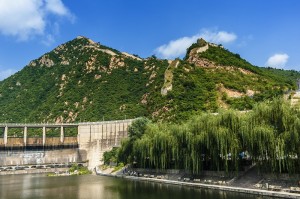 China’s construction on trans-boundary rivers is also likely to continue even in the face of growing international concern. China will continue to follow a “carrot” strategy to blunt the criticism of these dams, providing downstream countries with infrastructure and other needs where possible in order to get them on-side with China’s actions. China has the construction ability and the finance to proceed with the construction of many of these dams quickly. There is some argument that China plans to get the dams in place before the international community can rally effective support to pressure China to reconsider its actions.
China’s construction on trans-boundary rivers is also likely to continue even in the face of growing international concern. China will continue to follow a “carrot” strategy to blunt the criticism of these dams, providing downstream countries with infrastructure and other needs where possible in order to get them on-side with China’s actions. China has the construction ability and the finance to proceed with the construction of many of these dams quickly. There is some argument that China plans to get the dams in place before the international community can rally effective support to pressure China to reconsider its actions.
The speed of China’s dam-building has helped many of its projects, both domestic and national, bypass international environmental standards and impact studies. Though hydropower is not an exceptionally high-emission source of energy in the long run, it has been shown to be rather carbon-intensive during initial phases. In 2014, the Intergovernmental Panel on Climate Change stated that short-term emissions from damming and dam-related activity might be ten times the emissions that could have been saved if governments reduced fossil fuel usage via other means. The short run emissions are largely a result of the large reservoirs that form behind newly constructed dams. As these young bodies of water undergo various hydrological changes, they often emit larger quantities of greenhouse gases.
Over many years, however, total hydropower-associated emissions are nearly 30 times lower than coal, which is currently China’s most dominant energy source. In 2013, coal accounted for 73.8% of China’s total 5,396 TWh generated, while hydropower ranked second with a 16.9% energy share. Despite the prevalence of coal as an energy source, coal usage decreased 1.2% through October 2014, and this trend is likely to continue as northern China feels the strain of dwindling local water sources. Coal mining and processing requires an extraordinary amount of water that China can no longer afford to divert, given the drinking water demand of its citizens in northern urban centers like Beijing and Tianjin. If anything, the decline of coal will lead to an increase in the dominance of hydropower, which is already well-established in China. Dams may well supplant coal entirely and become the primary source of Chinese energy.
In July 2014, China reaffirmed its commitment to pursue further hydroelectric projects on the Jinsha River (the upper Yangtze), Yalong River, Dadu River, and the Lancang Cascade. It will also continue to aggressively pursue the international dam market, both to meet its own energy needs abroad and to create renewable, clean energy infrastructure for other countries. China’s commitment to Africa remains steadfast, with water conservancy and electric power as two of four key focus areas (the other two being communications and construction of ports, bridges, and railways). With these developments and even more plans in place, China is quickly becoming the largest, most experienced and most competitive dam builder in the world.

